Viruses, bacteria, and fungi: the differences
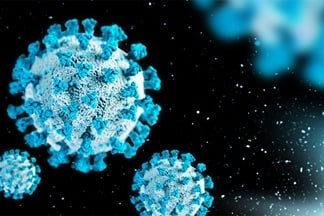
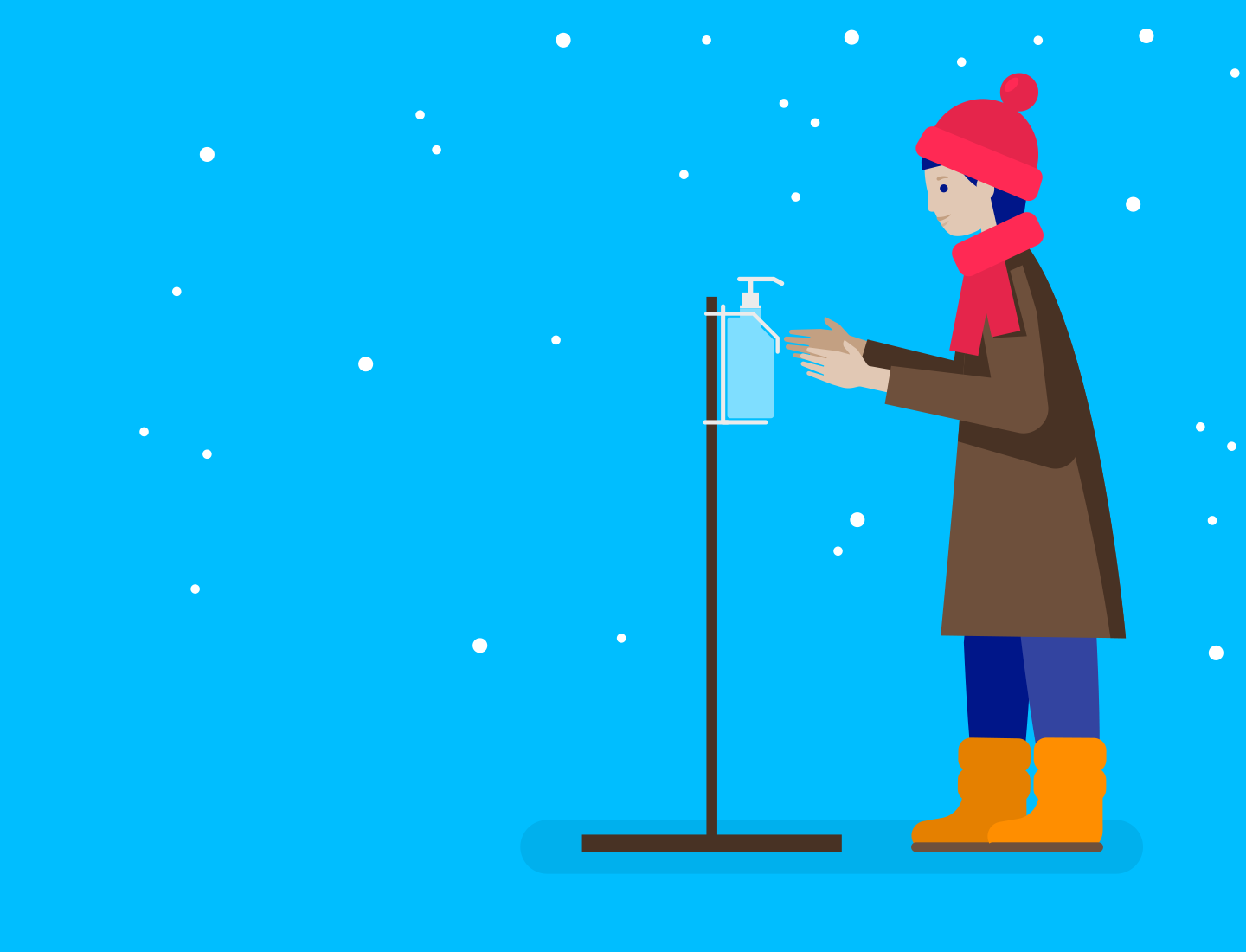

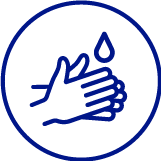
Warm blankets, hot chocolate, and the smell of freshly baked cookies: winter is the perfect time to get cozy. At the same time, for many, the cold season is accompanied by less pleasant signs too, such as runny nose, sore throat, and fever. No wonder, the period between October and May is considered ‘flu season.
The word "‘flu" is an abbreviation of the Italian word "influenza", which means "visit" or "influence" and describes an infectious disease caused by a certain type of virus. In the northern hemisphere, infections of this type tend to increase during this period. Every year, 10 to 30 percent of people in Europe are infected with the influenza virus. The result: hundreds of thousands of hospital admissions across the continent [1]. But what exactly is influenza?

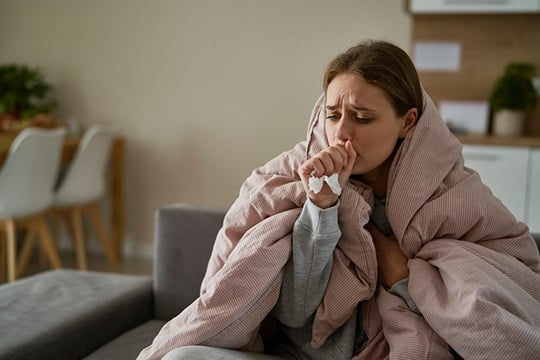
Simply put, influenza is a respiratory disease caused by influenza viruses (e.g., the H1N1 or H3N2). Infection usually occurs via droplets containing the virus, which are produced when sneezing, coughing, or speaking, and can be inhaled by other people [2].
However, influenza viruses can also be transmitted via our hands – namely when they come into contact with the virus droplets and then touch the mouth, nose, or eyes. The pathogens then enter the body via the mucous membranes [2].
Most of us have probably experienced the typical symptoms of ‘flu at some point. Those affected usually suffer from a fever, sore throat, dry cough, aching limbs, and headaches.
However, the severity and duration of symptoms can vary greatly. Around a third of people with ‘flu experience symptoms in their full form, including several days of complete exhaustion. Another third show significantly milder symptoms which are more like a cold, and the final third develop no symptoms at all. The ‘flu usually lasts five to seven days, but the cough can persist for two to three weeks [3].
‘Flu, and the subsequent consequences, are usually most severe for young children, the elderly, pregnant women, and people with chronic illnesses [1]. In principle, however, the ‘flu can be serious for everyone. This makes it all the more important that we protect ourselves and others from infection during the ‘flu season.
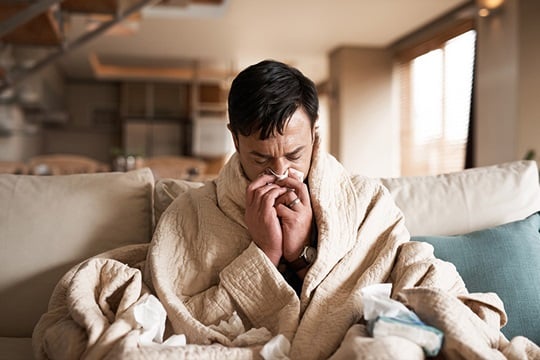

First of all, there is no such thing as 100% protection against ‘flu. Nevertheless, the risk of infection and a severe case of ‘flu can be significantly reduced by taking simple steps. Vaccination is one of the most effective and long-lasting protective measures [2].
It makes sense to renew the vaccination every year, preferably at the start of the ‘flu season in October or November. This is because the vaccine composition is reviewed every year and usually adjusted to provide the best possible protection against the currently circulating virus variants [2].
In addition to vaccination, you can also reduce the risk of infection through behavior. Wherever possible, you should avoid contact with people who are ill and keep your distance from people who are sneezing or coughing. Finally, regular (hand) hygiene also plays an important role in protecting against the ‘flu.
Influenza viruses are not only transmitted via the air, but also via our hands if they come into contact with viruses and then touch the mouth, eyes, or nose. Therefore, regular hand washing is another good way to protect yourself from infection.
When traveling, it´s also advisable to always have a hand sanitizer such as Sterillium® with you – especially if you are using public transport or are in places with large crowds. No matter whether it's after a bus journey, a concert or a visit to the theater: it makes sense to disinfect your hands wherever you might touch contaminated surfaces or where there is no opportunity to wash your hands.
But what’s is the right product for this?
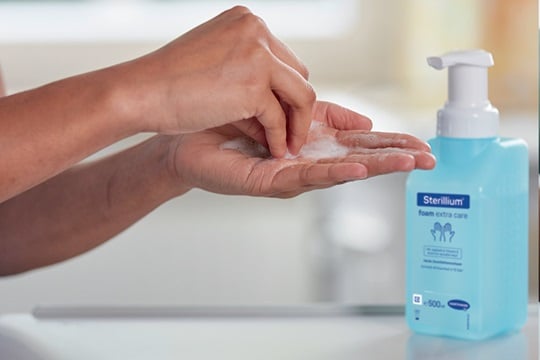
Fluid, gel-like, or with extra skin care ingredients? The choice of hand disinfectant depends on your own preferences. Basically, you're always on the safe side with a liquid alcohol-based product such as the classic Sterillium®, which is active against both viruses and bacteria.
However, especially in winter, hands often need a little extra care. The skin is usually particularly irritated during this time due to low temperatures. If you want to do something good for your dry, cracked, and irritated hands, our Sterillium® foam extra care could be just the thing for you. The new foam-based hand sanitizer not only protects against pathogens, but also has a particularly nourishing effect on the skin thanks to its ingredients — jojoba oil and vitamin E [4].
Perhaps you're simply looking for a practical product to take with you on the go. Then you should try our new Sterillium® 2 in 1 wipes. The disinfectant wipes eliminate 99.99% of bacteria, yeast and particular viruses, and fit in almost any bag thanks to their handy format. Perfect for people on the go! Simply take one of the 100% plastic-free viscose wipes from the pack and moisten your hands with it. Wherever you are.
The 2 in 1 wipes also have their place at home, as you can use them to disinfect surfaces too. Especially if you live in a household with sick people or care for someone in your own home, it makes sense to disinfect certain surfaces regularly.
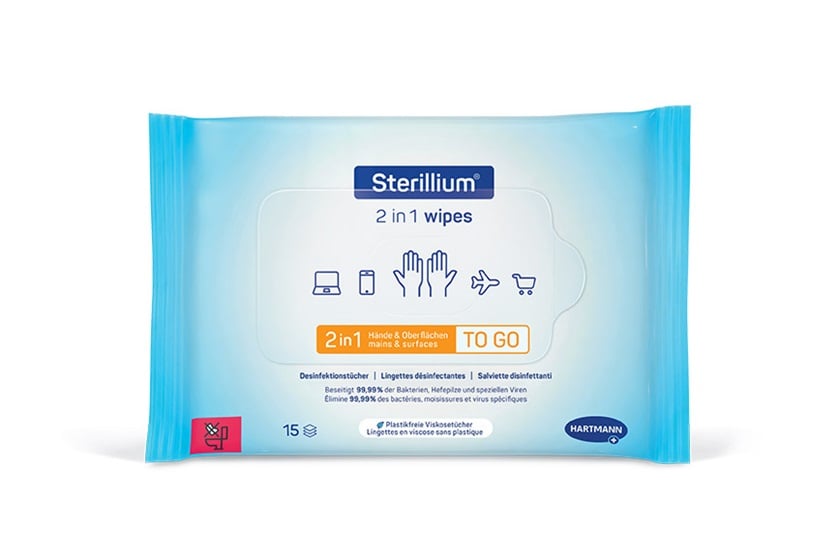
Did you know ‘influenza viruses can survive up to 2 full days on surfaces? And noroviruses can last up to 7? Many bacteria can even survive for several weeks on certain surfaces, depending on the environmental conditions [5]. For this reason, it can be useful not only to wash or disinfect your hands, but to also remove pathogens from certain areas in the home.
Our Sterillium® 2 in 1 wipes are ideal for quick surface disinfection – for example, disinfecting door handles, bathroom fittings or your desk. Of course, the viscose wipes are also perfect for on the go, disinfecting your smartphone or the handle of a shopping cart, for example.
Whenever particularly gentle surface disinfection is required at home, you can also reach for our our new Sterillium® surface spray. With its special formulation, the low-alcohol disinfectant spray is highly suitable for the rapid disinfection of sensitive materials such as monitors, acrylic glass, or smartphone displays.
Simply spray directly onto the surface and wipe with cloth. After one minute of exposure most viruses and bacteria are removed, and, after three minutes, more persistent pathogens, such as noroviruses, are also removed.
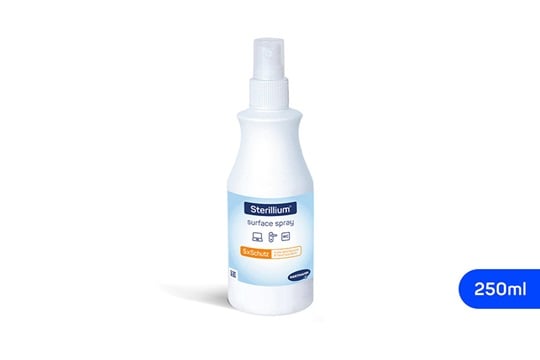
Whether you reach for the classic Sterillium® in the blue bottle, prefer the care properties of Sterillium® foam extra care, are looking for a surface disinfectant with the Sterillium® surface spray or want to be equipped for hand and surface disinfection at the same time with our Sterillium® 2 in 1 wipes, it’s important to protect yourself from infections at home and on the go, especially during the ‘flu season.
Our products help you with this. After all, together with vaccination and social distancing, (hand) hygiene is the most important requirement for getting through the winter and times with particularly high infection rates safely – regardless of whether it’s the ‘flu, COVID-19, or other infectious diseases.
Sources:
[1] European Centre for Disease Prevention and Control / Seasonal influenza
https://www.ecdc.europa.eu/en/seasonal-influenza
[2] Infektionsschutz.de / Grippe (Influenza)
https://www.infektionsschutz.de/erregersteckbriefe/grippe-influenza/
[3] Robert Koch Institut / Influenza
https://www.rki.de/SharedDocs/FAQ/Influenza/FAQ_Liste.html
[4] Brandt M et al. / SGS-Studie 22.0395-39. Unveröffentlichte Studie – Daten bei der BODE Chemie GmbH (2023)
[5] Kramer A, Schwebke I, Kampf G. How long do nosocomial pathogens persist on inanimate surfaces? A systematic review. BMC Infect Dis. 2006 Aug 16;6:130. doi: 10.1186/1471-2334-6-130. PMID: 16914034; PMCID: PMC1564025.
Use disinfectants safely.
Always read the label and product information before use.